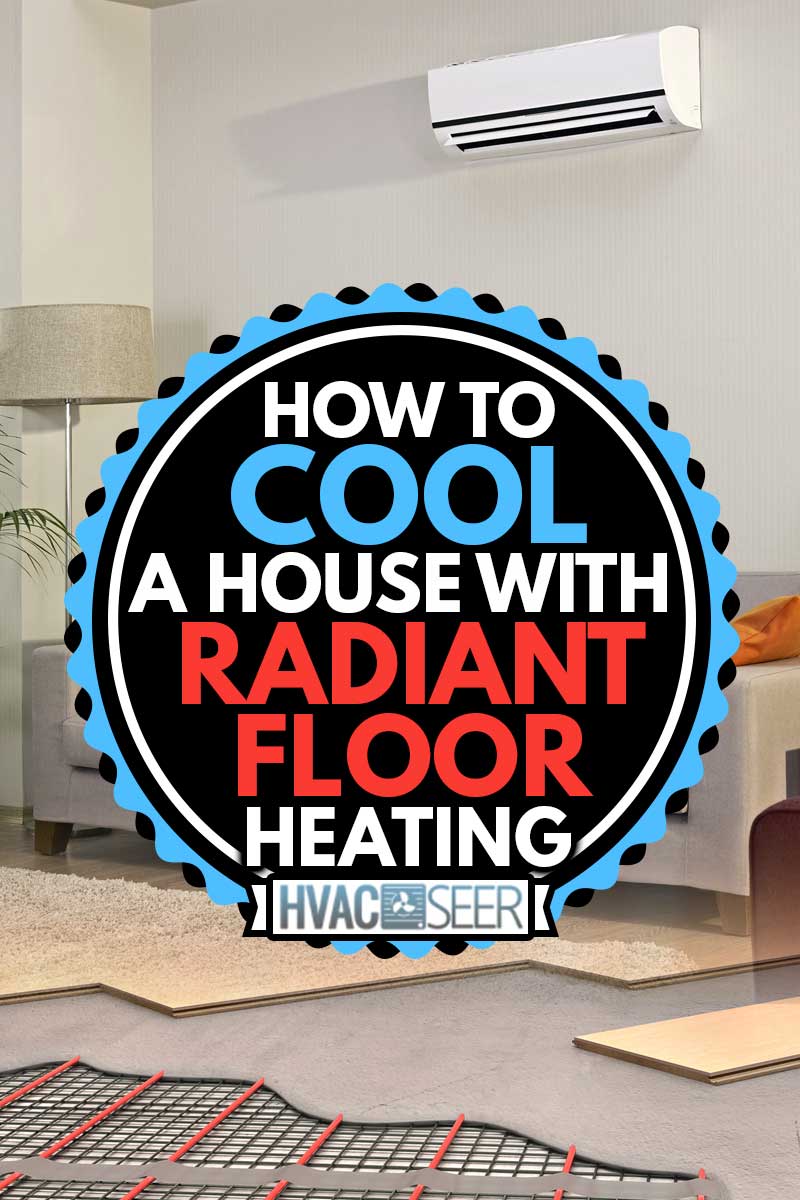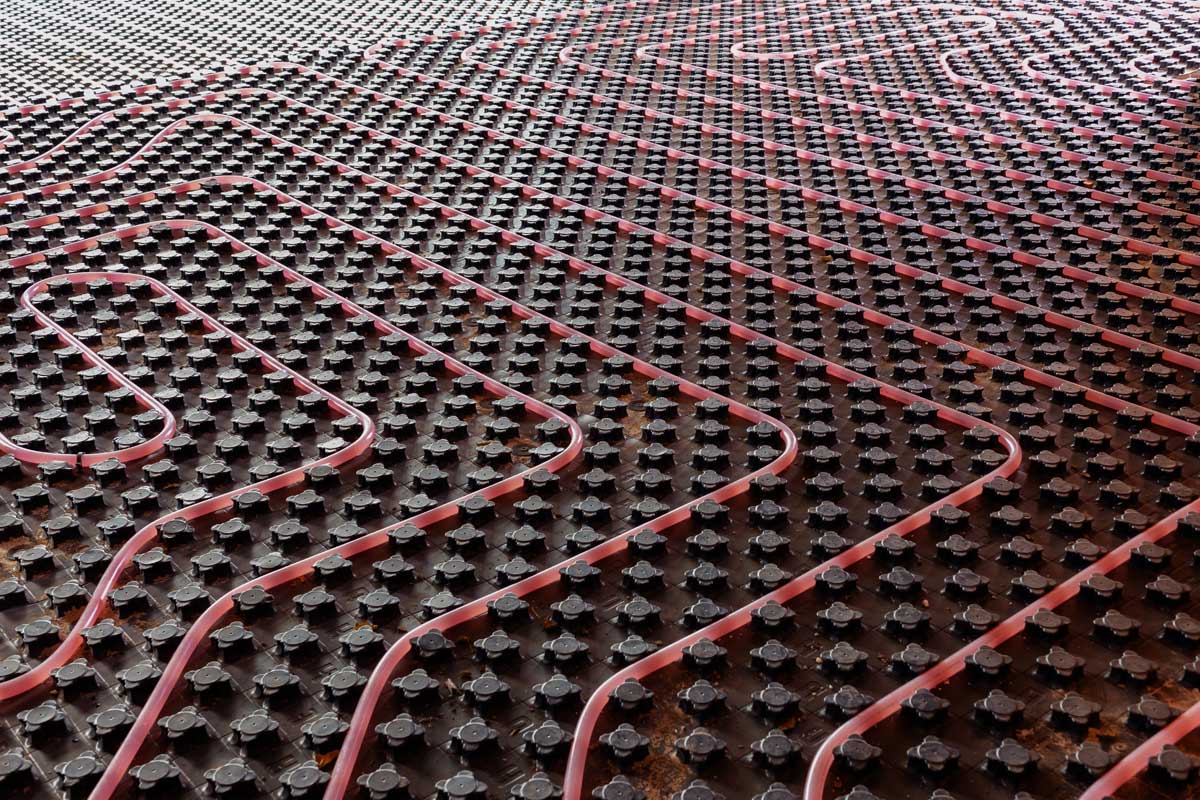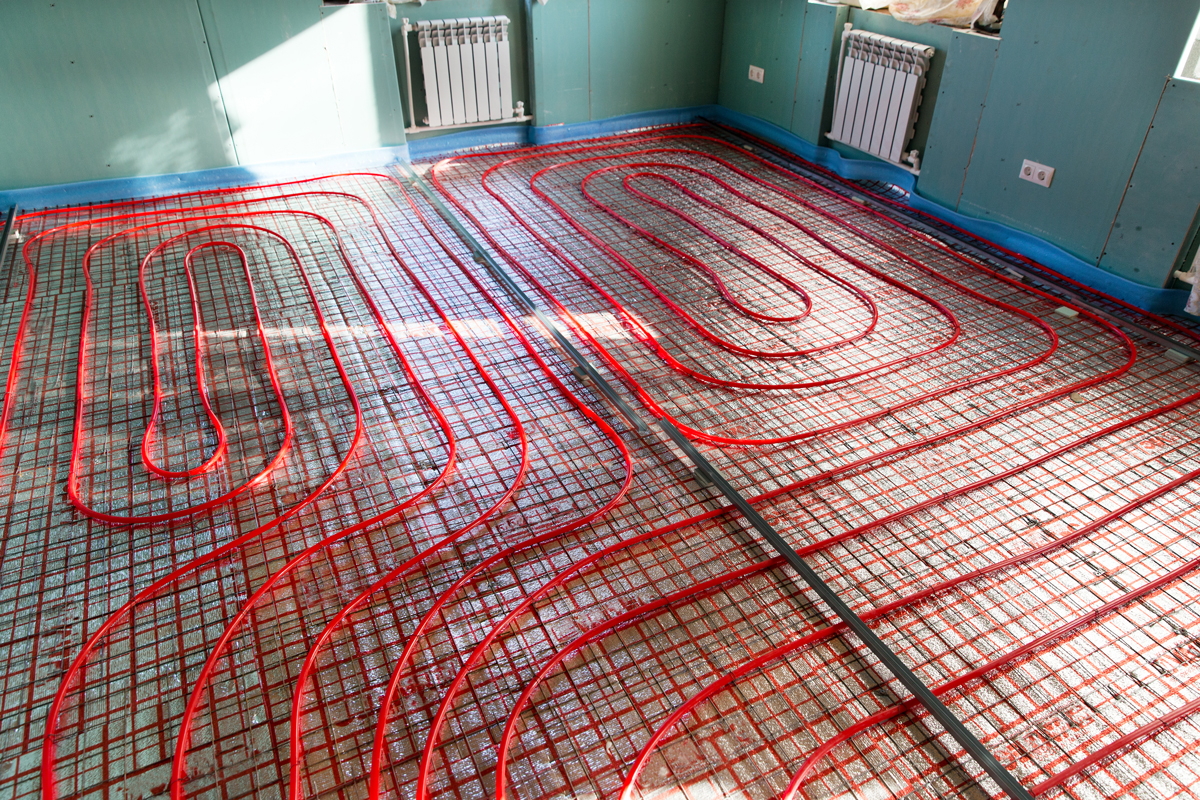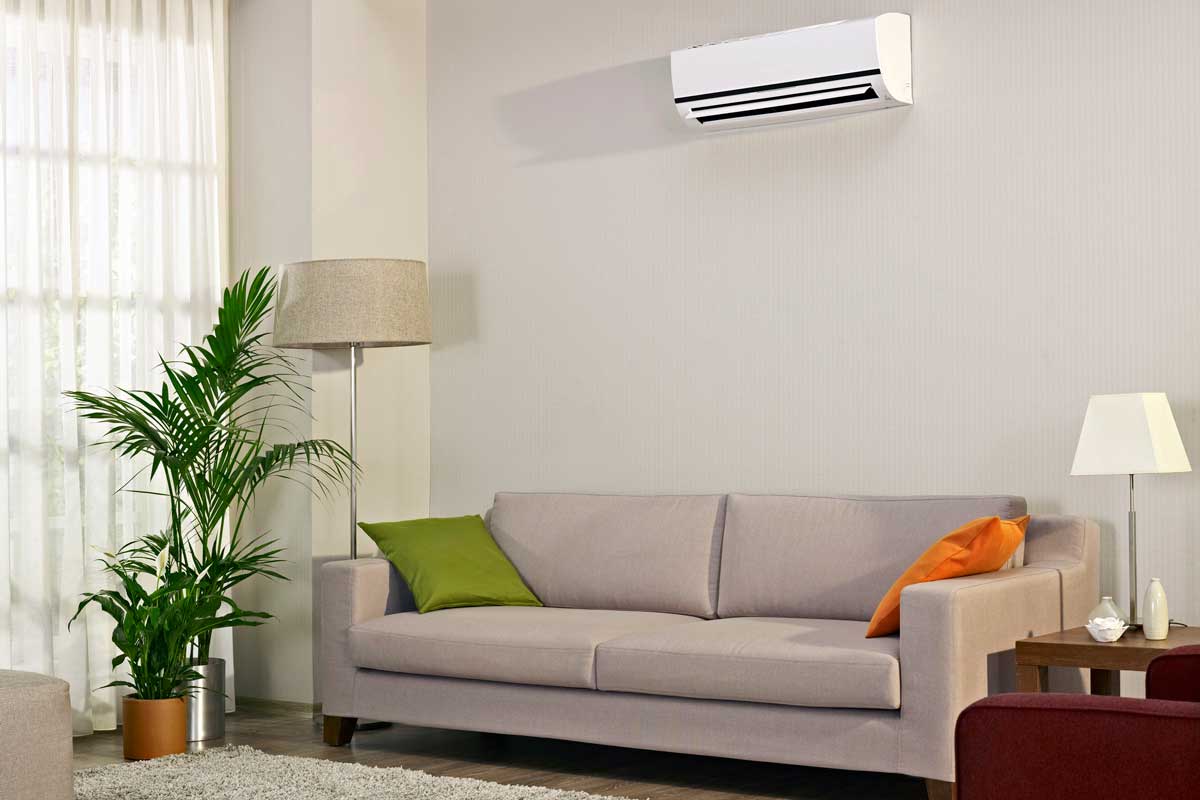Over the past few years, radiant floor heating has become a more popular option for home heating systems. This heating setup doesn't require any additional room, and it can be as effective and efficient as traditional heating systems. If you are a homeowner who is considering installing this type of system, you may wonder what type of cooling setup will work with it. In this post, we'll answer this for you.
You can use the following AC systems to cool a home that has radiant floor heating installed:
- Split Central Air Systems
- Radiant Cooling
- Ductless Mini-Splits
- Window Air Conditioning
- Packaged HVAC Systems
And as you can see, you have a few cooling systems options that will typically work well with underfloor heating. Let's discuss how each works to best to cool your home.

Do I Need A Separate Air Conditioning System With Radiant Floor Heating?

More often than not, homes equipped with radiant floor heating will have a separate system for their cooling needs. HVAC professionals usually recommend utilizing more traditional air conditioning systems instead of combining this function with the radiant floor heating system, though it is possible.
There are radiant systems that combine both heating and cooling effects and operate as the home's primary temperature regulator. However, this installation is more common in commercial buildings.
How a house with radiant floor heating can be cooled

Split Central Air Systems
Traditional split systems are the most common air conditioning system found in households today. But, can you have central air with radiant heat? It's not surprising to find that it's the most common cooling system used with underfloor heating, as most homes will have a central HVAC system installed before radiant floor heating.
Split air conditioner systems consist of an outside unit that contains the compressor and condenser. This same unit also contains the blower and evaporator coil for the system. The AC unit is connected to either a heat pump or furnace inside the home, usually located in the basement or attic area.
They work by circulating air conditioner refrigerant (or Freon) to and from the outdoor and indoor unit via refrigeration lines. The unit's blower then sucks and warm air and sends it over the evaporator coil to cool it. After the air has been cooled, the blower then distributes the air using ducts located throughout the entire building.
However, a thermostat that controls the temperature of the air conditioner for the split system will not be the same thermostat used to control the temperature for the underfloor heating system. Older homes that have not been renovated may not be equipped with central heating. So, if radiant flooring is installed in these homes, an alternative air conditioner system will need to be used for its cooling source.
Radiant Cooling
Some underfloor heating systems can also operate as cooling systems as well. In fact, these radiant cooling systems are typically designed with their radiant heat counterpart. Radiant cooling systems work by circulating chilled fluid through PEX tubing, which is typically embedded in the floors of the home. However, the network tubing can be installed in ceilings and walls, turning them into cool surfaces that can absorb heat energy.
Underfloor cooling systems don't introduce cold air into a room but instead work by removing the heat from a room via the tubing located in a subfloor. The chilled water or fluid within the tubes absorbs a significant amount of heat from the room and then travels throughout a pump system, where it is cooled by either a heat pump or a chiller. The cooled water is then pumped back into the PEX tubes, cooling the floor. One of these biggest benefits of this type of cooling system is that it's quiet, as there are no fans are blowers that need to be connected to the system for it to operate.
Ductless Systems
Ductless air conditioner systems (or mini-split systems) work similarly to a traditional central HVAC system. The main difference between the two is that instead of having a single indoor unit that distributes cooled air via ductwork, a ductless system has multiple small indoor units providing cooling to individual rooms, often referred to as zones. Mini-splits are a great choice for new home additions, older homes, or other scenarios where installing ductwork isn't feasible.
A mini-split system can be a suitable option if you have radiant floor heating installed in individual rooms in your home. They are small, easy to operate and come with an individual thermostat for each indoor unit.
Check out this ductless air conditioner on Amazon.
Window Air Conditioners
Window air conditioners can also be used to cool rooms that have radiant floor heating installed. They operate using the same principles as a central AC system, except that all of their components (condenser, coils, compressor, etc.) are located in one individual unit, which is placed in the windowsill of a home or apartment building. These units are small, portable, and fitted and installed in a windowsill within an hour or two. Window air conditioners are equipped with their own temperature setting, so in the warmer months, when your heated floors are turned off, you can simply turn on the unit and adjust the temperature to your preference.
Check out this window air conditioner on Amazon.
Packaged HVAC System
Another type of air conditioning system that can work with radiant heat flooring, but you may not hear about as often as others, is a packaged HVAC system. These systems work as a one-stop-shop heating and cooling solution for spaces that do not have sufficient room to house an air handler or furnace.
They contain the same components as a central or mini-split AC system, but just in one individual outdoor unit. The unit typically sits in the back on the side of a home or atop an industrial building's roof. They can be a great alternative if your radiant floors begin to malfunction for some reason, causing you to have to resort to an alternative heating option.
4 Types of Packaged A/C Systems
Air conditioner packaged unit: These units are a top choice for those living in warm and humid climates, as they offer multiple options for humidity control.
Heat pump packaged unit: This type of packaged unit combines both air conditioner and heating functions into one simple system and works best in areas that have mild winters.
Gas/electric packaged unit: Gas/electric packaged units provide both heating and cooling using a gas furnace in the winter and working as high-efficiency and electric-based cooling systems in the warmer months.
Dual-fuel packaged unit: These systems can work as heat pumps and provide effective cooling and dehumidification during summer months.
Is Underfloor Cooling Effective?
Under-floor cooling systems can be an effective and efficient way to provide cooling to a room or space. As mentioned earlier, it can be combined with an underfloor radiant heating system. They can also increase the traditional air-based AC system's lifespan by reducing its cooling load and lowering the amount of air movement within it.
However, underfloor cooling systems alone are typically installed in larger commercial spaces, such as industrial structures or multi-office buildings, as opposed to homes or apartment buildings.
Drawbacks of Underfloor Cooling
Below are a few disadvantages of underfloor cooling systems.
Condensation
Condensation is usually the biggest issue when it comes to installing a radiant cooling system within a floor. The reason is that these systems aren't capable of removing moisture from the air, which means that a particularly humid day could result in a considerable amount of condensation accumulating on the floor. This occurs anytime the dew point of the air in a room is lower than the floor's surface temperature.
Accumulating condensation on a floor area would be a major safety hazard. Also, radiant cooling can make the floor in a room feel cool to the touch, though the air near the ceiling may feel warmer. This is because cool air doesn't rise the same way that warm air does and can be a bit off-putting in a home setting.
Difficult Setup
Depending on your location, it may be challenging to find HVAC contractors or plumbers who are willing to install underfloor cooling systems in your home. If you are building a new home, it may be a bit easier to find a contractor that will install a dual radiant heating and cooling system on the floor simultaneously, particularly if the space is larger.
High Installation Cost
While underfloor radiant cooling systems may use less energy to operate than a traditional AC system, the initial cost of the installation and setup (as well a the cost of the heat pump or chiller) can be particularly expensive, and as a result, may not offset the yearly cost to cool a home using other AC systems.
How Hot Do Radiant Floors Get?

Most underfloor heating systems operate between 75-85 °F. However, the water inside the tubing can be set anywhere from 80-125°F, raising the floors' surface temperature about five or so degrees above the set thermostat temperature. Many homeowners who install radiant floor heating describe the floors as feeling similar to the sun's warmth, which makes sense as the system uses heat radiation to warm the area within a room from the ground up.
Wrapping Things Up

Radiant underfloor heating and cooling systems can be complicated, depending on the current HVAC setup of the building and the system's requirements to be installed. Hopefully, this guide has provided you with the most common options for combining cooling systems with radiant floor heating.
To help determine which heating or cooling option is best for your home, it's always recommended that you speak with certified HVAC technicians in your area, as they can inform you of its capabilities and limitations.
Before you go, be sure to check out our other HVAC posts:
https://hvacseer.com/how-long-radiant-floor-heating-last/
https://hvacseer.com/are-heated-floors-dangerous/


